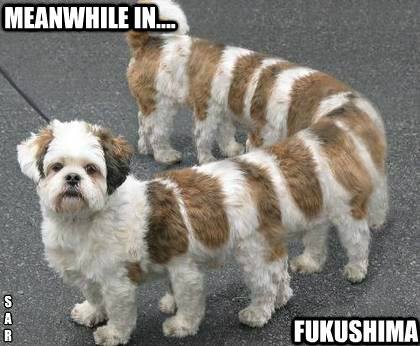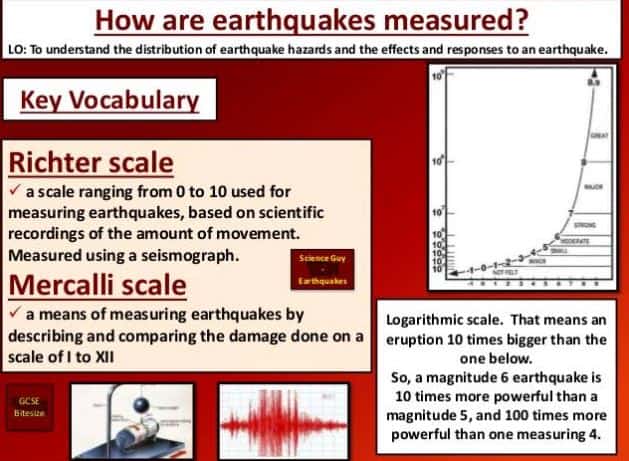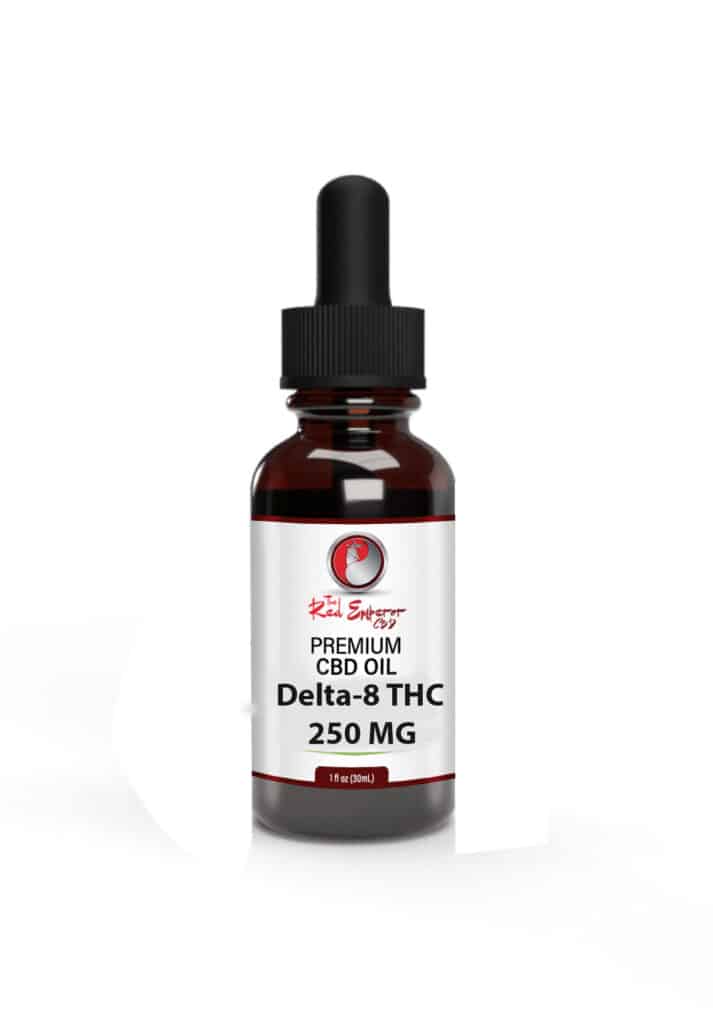Table of Contents
Chornobyl, Fukushima, Weather Manipulation, and Radioactive Food being Fed to the Masses…
Author: Agent Midnight Rider
Date: 3/4/2021
I am going to skip over the Presidential debates and voting fraud this addition and concentrate on a subject that should be the NUMBER CAUSE of panic in human history. And that is the coverup of the sabotage of Fukushima Diachhi in 2011. If any of you follow Juan Savin you will remember he keeps REPEATING 3-11 as a key date. As a lot of you are now finding out that the news and social media are completely censored it SHOULD make you wonder how much shit they got away with before the internet when we all assumed our trusted news anchors were telling us the truth. Now that you know all of that is BULLSHIT think how badly they covered up Fukushima. I personally believe that it was done on purpose, they are several theories as to WHY, but my main theory is to populate the planet, in other words, EXTERMINATE US like roaches using an insecticide called radiation. This article below was originally published on a New Zealand website but they put it behind a paywall. I copied it over here so you wouldn’t have to pay and to give you some MIND blowing revelations. Number one being is that they used Weather modification to save Chornobyl from becoming a radiative death zone and also how they packed highly radioactive crops and meats and then SOLD them to poor countries like Africa and Eastern Europe
https://www.businesslive.co.za/bd/life/2019-06-04-chernobyl-horror-has-nuclear-lessons-for-sa/
Chernobyl horror has nuclear lessons for SA
As we consider this energy option it is key to bear in mind that the manipulation following this disaster means the full scale of damage can only be guessed at
Powerful storms, record-breaking temperatures, and rising water levels remind us daily of the impact of climate change and our need to address it. Policymakers are debating what shape the post-carbon future will take and SA is one country where that conversation is taking place.
Proponents of nuclear power argue that nuclear energy is the most viable and powerful alternative to fossil fuels. Opponents point to waste storage problems, plus the slow pace and high cost of building new reactors. And, they ask, what about when something goes wrong?
I recently published a book called Manual for Survival: A Chernobyl Guide to the Future, about the 1986 explosion of reactor number four at the Chornobyl nuclear power plant in Ukraine, which was at the time a republic in the Soviet Union. I found as I worked through 27 archives that much of what we are told about the Chornobyl accident is incomplete or incorrect. People were far sicker and far more people died than we are led to believe. Chornobyl contaminants were not safely enclosed within the Chornobyl Zone. Nor has the chapter been closed. We are still ingesting the Chornobyl fallout from 33 years ago.
The official tally records 300 people hospitalized after the accident. These were mostly firemen and plant operators, but I found that Soviet leaders gave orders to release information on Chernobyl patients from only one Moscow hospital. In the months after the accident, villagers in contaminated regions streamed into many other hospitals. Archival records show that not 300 but 40,000 people were hospitalized for Chernobyl exposures in the summer after the accident. Many of them were children.
Journalists tend to focus on the Chornobyl Zone, a 30km circle around the plant that was depopulated in the weeks after the 1986 accident. Many correspondents report that nature in the zone is “thriving”, teeming with animals and plants that prefer radioactivity to human habitation. That story is wrong on two counts.
First, shortly after the accident, pilots chased clouds of radioactive fallout flowing northeast from the burning reactor. They manipulated the weather to make radioactive rain land in rural Belarus in order to save several Russian cities, including Moscow. That triage operation saved the contamination of millions of people but created a second Chornobyl Zone that few know about today.
At the time, Moscow officials told no one in Belarus about the weather manipulation operation. The head of the Belarusian communist party, Nikolai Sliunkov, only found out about the accident, about 5km over the Belarusian border, by phoning the head of the Ukrainian communist party several days later. The 200,000 people who lived in the Mogilev province under the seeded clouds of fallout were mostly farmers. They ate what they grew and lived with high levels of radioactivity for up to 15 years until the territory was finally evacuated in 1999.
Do you have friends who live in states where marijuana is still Illegal? Don’t let your friends get fined and jail time for smoking a plant, tell them about our Delta 8 THC products which are federally legal in 50 states and help END THE DRUG WAR against Americans. gally sold online. Our Software tracks cookies FOR LIFE so every time you or a friend orders you make 15% of the total order. It’s Free to sign up and takes 10 seconds to set up your link. Does your dispensary pay you 15% CASH BACK for every person you bring to them? If not then join the Red Emperor Collective of friends we have over 70 products that can be chosen from. The average Order is $150. Click Here To Join for Free!
****Agent Freak Nasty***
This is not part of this same article but something to consider. The following Email was sent to Hillary Clinton from Cheryl Mills one day after Fukushima Blew up. Notice *** How they talk about wind charts and how the radioactive clouds were headed STRAIGHT TO TOKYO, one of the world’s NUMBER ONE populated city at 37.4 million people. Also notice they warned each other TO SHELTER INDOORS and to WEAR A MASK. None of this information made it to the general public. Many of us in the intelligence community believe that Fukushima was NOT A ACCIDENT at all but was DONE ON PURPOSE, for depopulation. You can read my entire write-up on Fukushima The Covert Samson Option Here…http://www.dispensaryexchange.com/read/17/126/The-Covert-Samson-Option
https://wikileaks.org/clinton-emails/emailid/11782
Hillary Clinton Email Archive
RADIATION – FYI
From: Cheryl Mills To Hillary Clinton Date: 2011-03-12 00:33 Subject: RADIATION – FYI
From a guy we know here in japan who does background searches for us etc… This is not advice that is currently in the news. You’ve met the source before Also by coincidence I have a 1.4(C) B1 UNCLASSIFIED U.S. Department of State Case No. F-2014-20439 Doc No. C05780602 Date: 01/29/2016 Radiation leak from the Fukushima reactor 1.4(C) Stay indoors if at all possible. There is nothing, no events, parties, sports, movies, etc that are worth B1 getting more exposure to radiation. The stuff travels far, very far. The wind is all over the place, but we must assume it is heading toward a major area like Tokyo, a city, a heat source. As long as the radiation leak is going, and up to 24-48 hours later, the threat is at its highest in most cases. Here is a wind chart online. It shows wind all over the place, but one trend is there – winds head to Tokyo. http://www.surfline.com/weather-forecasts/japan-wind-chart_2731 Also, a power outage is expected to hit about 1800 this evening as more people return home and start using more electricity. Charge any devices you have that need charging. People will draw a lot of power about 1800-1900, so expect blackouts and brownouts. Get your flashlights ready, with new batteries. Very similar to 3-Mile Island, and maybe Chernobyl. VOA News has this take. http://www.voanews.com/english/news/asiaaapans-Tsunam i-Death-Toll-Seen-Reaching-1000-117829978.htinl Leak has been doing since last night. It is still not under control. A US team was flown in to help get this thing under control, but that is not public record yet. It will come out later, I think. Any, the ANyleak from last night means it is hitting us about now. I am not going outdoors for a while. Normally one might also take K-I (Potassium Iodine) tablets as a precautionary measure. Substitutes include alternative sources of iodine includingisojinor consuming seaweed (nori). Wear a mask, and a hat if possible. Take a shower immediately after you return home and wash your clothes. Radioactive steam was released yesterday and continues today. It will likely be in the area now. What I suggest above is not costly, and not too onerous. Do it and play it safe. Don’t go outdoors unless it is necessary. UNCLASSIFIED U.S. Department of State Case No. F-2014-20439 Doc No. C05780602 Date: 01/29/2016 Mitch M. Murata
Ok so notice TWO Important things in this email First they WARNED each other to wear a mask and to SHELTER indoors. JUST Like they have been telling us to wear masks and stay indoors in COVID. Those MF”! BASTARDS!!!!! They let me and you and our children suck in radioactive hot particles while they and their elite circles got a fair warning to protect themselves. It doesn’t matter who you are working for, the evil guys are the good guys, we ALL got family and kids we love, this alone right here should make all of you stupid black hats take pause and take a look in the mirror..
Some of you may be saying SO WHAT! that’s Tokyo’s problem we here in the United States are too far away to get that shit in our lungs…..Hold My Beer….Que-
***Agent Freak Nasty***
***Tsunami Bomb***
Ask yourself this question, how is it possible for there to be ZERO damage from the 9.0 earthquake and be ZERO physical damage to buildings and structures BEFORE the ways hit. The earthquake that hit KOBE Japan measured 7.3 on the Richter Scale, versus 9.0 for Fukushima. Let’s look at some of the damage from the first quake in this video.
https://m.youtube.com/watch?v=emhqTqT_omE
Now go and look at the ZERO damage in Japan BEFORE the Tsumani waves hit.
Notice how there is not even a shingle out of place or a car moved from the lines they are in. The Richter Scale is measured exponentially
So a 7.0 earthquake is 10 times more powerful than a 6.0, and an 8 Richter scale is 100 times more powerful than 6.0 which means a 9.0 Earth Quake is 1000 times more powerful than a 6.0 but MIRACLOUALY not one visible piece of damage is shown before the waves hit the shoreline.
The Best Kept Secret of World War Two — Project Seal, the tsunami bomb
https://www.nbr.co.nz/article/best-kept-secret-world-war-two-%E2%80%94-project-seal-tsunami-bomb-ck-134614
Today Shakespear Bay, north of Auckland, is a popular weekend spot for windsurfers, paddle boarders, and visitors to the resident population of peacocks, but during the last years of World War Two, the tranquil waters trembled with the concussion of almost 4000 test explosions.
Project Seal was a highly classified experiment to test the feasibility of destroying coastal defenses, even cities, by producing a huge artificial tidal surge, a tsunami.
Blasted landscape: The explosion of reactor number four at the Chernobyl nuclear power plant in Ukraine in 1986 carved a swathe of destruction. Picture: LANDMARK MEDIA/P BISCHOFF
Nor is nature in the zone thriving. I observed the work of two biologists, Tim Mousseau and Anders Møller, who have since 2000 conducted twice-yearly experiments in the Chernobyl Zone and published hundreds of papers on their findings. Their studies show cascades of extinction in the most contaminated areas. “Every rock we turn over,” Mousseau commented, “We see the damage.”
If there was a REAL 9.0 earthquake the entire coast of Japan would have been destroyed, yet we see NO EVIDENCE of pre-Tsumnai damage. The only logical conclusion is that this secret Tsumia bomb was used. Jimstonefreelance.com goes into deeper detail about the sabotage at this link here. http://82.221.129.208/fukureport1b.pdf
Nor is nature in the zone thriving. I observed the work of two biologists, Tim Mousseau and Anders Møller, who have since 2000 conducted twice-yearly experiments in the Chernobyl Zone and published hundreds of papers on their findings. Their studies show cascades of extinction in the most contaminated areas. “Every rock we turn over,” Mousseau commented, “We see the damage.”
The records of the Soviet state committee for industrial agriculture reveal how radioactive contaminants are concentrated in the food chain and in places of human habitation. A few weeks after the accident, Soviet shepherds corralled 100,000 head of livestock from a 60km radius around the Chernobyl plant. While teamsters drove the bleating animals to slaughterhouses, Moscow agronomists issued a special manual for meatpackers with instructions to mix low- and medium-level radioactive flesh with appropriate proportions of clean meat to make sausage.
The sausage was to be labeled as it normally would and to be shipped across the great Soviet Union, everywhere but Moscow. Meat with high levels of radiation was to be stored in freezers until the radioactivity decayed. Soon managers in Belarus were asking for more freezers. They asked again and again, but no freezers arrived, so they located a refrigerated train car and packed in 317 tons of highly radioactive meat, and sent the dubious gift to the Georgian Republic, where it was rejected and passed on.
For the next three years, the radioactive ghost train circled the western half of the Soviet Union; no one wanted it. Finally, four years later, KGB agents buried the train and its radioactive meat inside the Chernobyl Zone, where it should have gone in the first place.
I found that over 200 Chernobyl clean-up workers were awarded damages at a wool factory in Chernihiv, Ukraine. That was strange. We are used to thinking of clean-up workers as the firemen who fought radioactive flames after the accident, not female wool workers 80km away in a relatively unscathed city. Curious, I drove to Chernihiv and found only 10 of 200 women on the list still at their jobs.
The rest had died or retired as invalids. What had the women been doing to get such high doses? They were simply picking up bales of wool to sort at their tables. Each bale measured up to 3.2 milliroentgens an hour. That is a lot of radioactivity, like hugging an X-ray machine while it is turned on. “Oh, we were full of radiation. Ping, ping, ping,” the sorters remembered. “We took off our smocks and they balled them up and threw them away.”
I wish I could say that other branches of the Soviet agricultural industry better managed the catastrophe. Unfortunately, that was not the case. Sanitation inspectors quickly learned that almost everything was contaminated over permissible levels: milk, berries, eggs, grain, spinach, mushrooms, honey, and even mothers’ breast milk.
As with meat and wool, Soviet officials were unwilling to toss out contaminated agricultural goods, so they issued more manuals about how to process these radioactive provisions. Contaminated milk was to be dried or turned into butter or candy. Irradiated sugar beets were repurposed into animal feed, contaminated potatoes into starch, dirty berries became preserves, and vegetables transformed into pate. The processed food was to be stored for months or years until the most pernicious isotopes decayed.
The insistence on selling radioactive food was not uniquely Soviet. Chernobyl fallout also landed in Greece and contaminated fields of grain. The Greeks harvested the grain and exported 300,000 tons to Italy. The Italians didn’t want the wheat. The Greeks refused to take it back because, they said, they were “afraid of the reaction from Greek wholesalers”. The two Mediterranean neighbors started fighting. Finally, the European Economic Community agreed to buy the contaminated wheat. They mixed it with clean grain and shipped it to Africa and East Germany as “aid”.
What were the effects of ingesting radioactive contaminants in food? Some Moscow experts in radiation medicine concurred with the UN and international experts in asserting that the doses villagers were taking in were too low to cause any detectable health problems.
The specialists made this prediction extrapolating from the Japanese bomb survivor Life Span Study.? The study has a troubled political history. After the war, American officials were anxious that nuclear bombs would be banned like chemical and biological weapons. So they censored information about Japanese exposures to radioactivity and seized measurements of fallout that Japanese physicists had collected.
After tossing out Japanese scientists’ real-time measurements, American scientists had five years later to reconstruct doses survivors received. They included in their dose estimates only exposures from the bomb blast, one very large x-ray, and denied the fact of radioactive fallout. As calculated, a dose in the form of a large external x-ray differed greatly from the chronic low doses of radioactivity that residents of Chernobyl-contaminated territories ingested daily in their food, water, and air.
Soviet doctors treating Chernobyl-exposed suddenly had an unwelcome crash course in this medical problem. They found that radioactive contaminants, even at relatively low levels, infiltrated the bodies of their patients, who grew sicker each year. Gradually, health officials understood they had a public health disaster on their hands. Thousands of archival records document the catastrophe. Ukrainian doctors registered in the most contaminated regions of Kyiv province an increase between 1985 and 1988 in thyroid and heart disease, endocrine and GI tract disorders, anemia, and other maladies of the blood-forming system.
In two closely watched regions of the province, infants born with congenital malformations grew from 10% to 23% between 1986 and 1988. And 46% of newborns in some fallout regions died within 28 days of life. Half of these deaths were stillborn, the other half had congenital malformations “that were not compatible with life”.
With these prospects, many women did not have the courage to reproduce. An uncommonly high percentage of women, up to 75%, chose to terminate their pregnancies. By 1989, doctors were noticing a dramatic rise in thyroid cancers and leukemia among exposed children, normally very rare occurrences.
For three years, Soviet physicians had to sit on this information, telling no one but their bosses. Finally, in the spring of 1989, censors lifted the ban on Chernobyl topics. Residents made alliances with doctors and radiation monitors. They organized, petitioned, broke laws, and carried on when dismissed as ignorant provincials in order to get the world to understand the new precarious life they led. Soviet officials found crowds on the streets more threatening than radioactivity. They called in UN agencies to send foreign experts to do an “independent assessment”.
Consultants from UN agencies dismissed the findings of scientists in Ukraine and Belarus. Again extrapolating from the Japanese Life Span Study, the UN experts stated in 1991 that radioactivity at Chernobyl levels would cause no major damage to human health except for the risk of a small number of future cancers among children. They reiterated this statement despite the evidence they possessed and failed to publicly acknowledge an alarming childhood cancer epidemic underway.
The denials came at a critical time. Just after UN consultants declared they found no Chernobyl health effects, the UN General Assembly held a pledge drive to raise $346m to help pay for resettling people living in highly contaminated regions and for a long-term epidemiological study on chronic low doses of radioactivity, something scientists around the world had called for since the Chernobyl plant blew. Unfortunately, the big donors begged off, pointing to UN experts’ assessment that there had been no Chernobyl health effects. As a consequence, the pledge drive raised less than $6m.
Why would UN officials whitewash evidence of Chernobyl’s health damage? At the time the US, Russia, France, and the UK faced huge lawsuits from their own exposures of people to radioactive contamination during four decades of reckless bomb production. If they could assert that Chernobyl was “the worst disaster in human history” and only 54 people died, then those lawsuits could go away. And that is indeed what happened.
Today, the low Chernobyl death toll is used as a rationale to continue building nuclear power plants; it’s said to be far safer than the thousands who die annually from burning coal. But that number — 54 dead — is incorrect. The Ukrainian state currently pays compensation not to 54 but to 35,000 people whose spouses died from Chernobyl-related health problems. This number only reckons the deaths of people old enough to marry. It does not include the mortality of young people, infants, or people who did not have exposure records to qualify for compensation. Off the record, Ukrainian officials give a death toll of 150,000. That figure is only for Ukraine, not Russia or Belarus, where 70% of Chernobyl fallout landed.
Underestimating Chernobyl damage has left humans unprepared for the next disaster. When a tsunami crashed into the Fukushima Daiichi nuclear power plant in 2011, Japanese leaders responded in ways eerily similar to Soviet leaders: with denials, obfuscation, and a declaration of bankruptcy. Today, 33 years after the Chernobyl accident, we are still short on answers and long on uncertainties. We understand little about low-dose exposure because no large-scale studies have been conducted.
Ignorance about low-dose exposures is tragic and not entirely accidental. Before SA leaders invest in a new generation of power reactors to stem global warming and solve SA’s energy crises, it would be smart to ask a new set of questions that is, finally, useful to people exposed over lifetimes to chronic doses of man-made radiation. Unfortunately, few people on earth have escaped those exposures.
An abandoned amusement park in the city center of Prypiat in the Chornobyl exclusion zone. Picture: MAXYM MARUSENKO/NURPHOTO/ GETTY IMAGES
I wish I could say that other branches of the Soviet agricultural industry better managed the catastrophe. Unfortunately, that was not the case. Sanitation inspectors quickly learned that almost everything was contaminated over permissible levels: milk, berries, eggs, grain, spinach, mushrooms, honey, even mothers’ breast milk.









